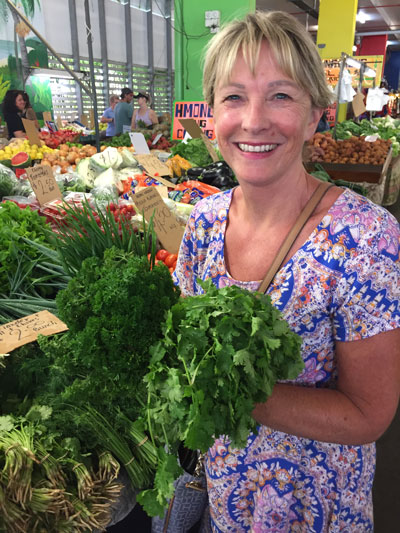Food modifications – additives – synthesis
This piece of creativity (rant), emerged after a sleepless night of a racing mind, leg wriggles, sweats, and a growling bowel. I had made a mistake and bought a pack of soup. Ready to eat, organic, good food the label said. I purposely didn’t read all the ingredients, I was after a bit of convenience. My kitchen wasn’t stocked and I was taking a shortcut. So wished I hadn’t. I’m not even going to drag the packet from the rubbish to see what was in it. I can guess. It was a miso soup-based product, so the soy will be the first upset.
Food modification has been a growing concern of many people, for several decades – whole foods are being adulterated with additives and modifications.
You might wonder – what’s the quickest way to identify food that has additives in, without even reading the ingredient panel? To me, any food in a packet most likely will have additives. The concept of looking after consumers by numbering the additives and putting the number on the packet almost sends me leaping to a desert island.
There are two schools of thought here: is the number used because the name of the additive is so long it won’t fit on the label or are the numbers a way of hiding what the ingredients are until we get to Uncle Google to find out? The food company has made their sale, although we can return the item, but how many people really return items? To help with your shopping and identifying what’s in it, there are apps you can use now that help with instant identification. ‘whatsinit’
So much effort has gone into this ‘what’s in food’ management. There are websites that boast they have 2,631 food items listed and what their composition is. Are these written by the food industry or the food industry minders trying to demonstrate they have our health and nutrition in mind?
For goodness sake, when are the majors in the food industry, and the governing bodies, going to realise this? I know this has been written about a thousand times, so take this as a reminder. The consumer (us, you, me) must remember that the food industry is on the planet to make money, and it appears that their goals are not about providing nutritional products that are cognisant of us, the diner.
The food industry exploded when economists and scientists said the world’s population would starve if something wasn’t done. This was the excuse for GMO of crops. Bigger, faster, better.
The result of all this is: the world still has starving millions, and across the globe is being swallowed up by urban sprawl, and topsoil is being eroded away.
Commercial cropping such as coffee, cotton, palm oil, soybean and wheat, increases soil erosion. Why? because of the GMO of the crops. The modifications force the growth to speeds that the natural seasons can’t keep up with. The nutrients required from the soil to get the plant to the point of desired harvest by the croppers can’t be replaced naturally. Adding fertiliser and herbicides further exacerbates the erosion and depletion of nutrients.
The marketing of products now is a big worry. The fitness industry adopted the concept of meal replacements and ‘better quality’ proteins. Or ways to replace the ‘lost’ nutrients from exercising. This concept of meal replacements then hit the ‘weight loss’ followers. And today it’s talked about as simply a more convenient and nutritious way to have a meal.
 I recently read an article about meal replacements and some of the ingredients. This article was written by Sayer Ji. The meal replacement was Soylent, which is positioned in the market as a plant-based, ‘low-carbon’ footprint alternative for a meal. In the article, he talks about some of the ingredients. I believe these ingredients are common in many meal replacements.
I recently read an article about meal replacements and some of the ingredients. This article was written by Sayer Ji. The meal replacement was Soylent, which is positioned in the market as a plant-based, ‘low-carbon’ footprint alternative for a meal. In the article, he talks about some of the ingredients. I believe these ingredients are common in many meal replacements.
Manganese sulphate is classified by the EU Index as “Harmful” and “Dangerous for the environment” but it’s added to meal replacement drinks, and infant formulas regardless.
Dl-alpha-tocopheryl acetate, a synthetic form of vitamin E, almost bares no relevance to the benefits of food-derived vitamin E. Studies have shown that it aggravates health problems, especially those related to smoking, it increases the risk of stroke, and pneumonia, and may contribute to DNA liver damage.
Consumption of sodium selenite, the inorganic, trace element selenium, is associated with a number of potential health risks. Studies showed foetal abnormalities in animals, and the potential to damage DNA and chromosomes.
And sucralose, the synthetic sweetener used, has been shown to compromise delicate gut flora, inducing glucose intolerance and contributing to metabolic and thyroid dysfunction, in addition to being cancer-causing.
Well, readers and diners, my words to you are – avoid. Avoid. Avoid at all costs. It’s not worth the money or the aftermath of sleepless nights, inflamed bodies, inflamed brain and any amount of illness. Keep your kitchen stocked with whole foods, grown fresh, preferably organic or non-GMO. There are so many beautiful options you can’t go wrong. Learn uncomplicated combinations for a start using fresh fruit, vegetables, and herbs for additional benefits and flavour. A little fish or meat to suit. Shop fresh.

